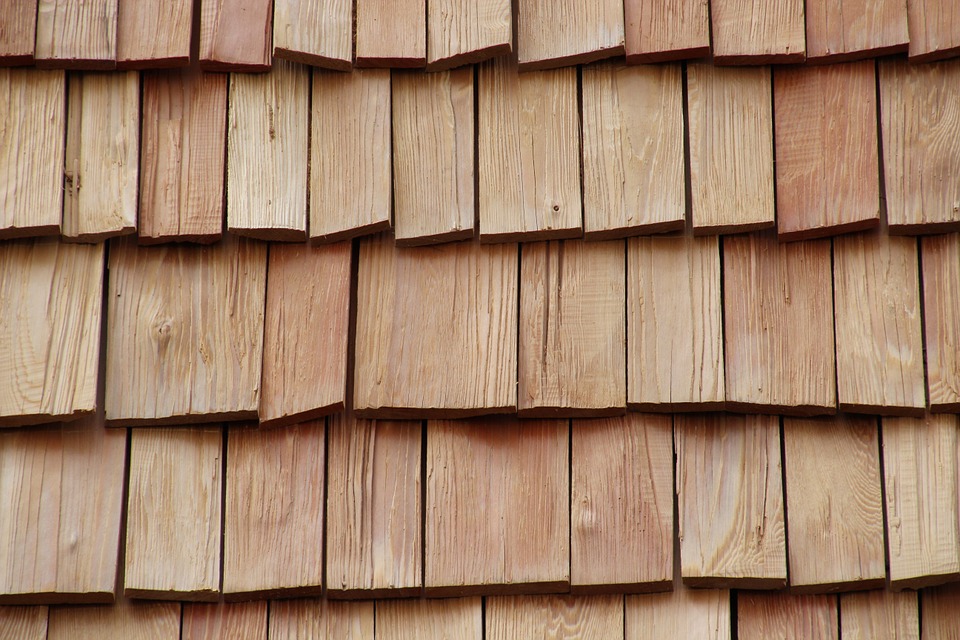“Whats the Difference Between Shakes and Shingles?”
If you hear people talking about “shakes” and “shingles” and think they are talking about obscure Motown acts then you’re probably not going to get the answer to this question right…
But if you’ve ever thought about re-roofing an existing structure, or building your own home or garden shed, it’s a good idea to know that “shake” and “shingle” aren’t synonymous. Check out our rundown of the main differences below, so that next time you’re talking to a contractor or salesman you’re as clued up as can be.
Aren’t shakes and shingles basically the same thing?
Nope! For starters, they’re not necessarily made of the same materials. Wood, bitumen, slate, stone, cement, metal and plastic are just a few of the different materials shingles can be made from. “Shingle” is a catch-all term for roof coverings made of discrete overlapping segments. Shakes, on the other hand, are always made of some variety of wood, such as pine, cedar and redwood.
So a wooden shingle is a shake?
You could be forgiven for thinking that all wooden shingles are shakes, but that is not the case. You can say that a shake is a type of wooden shingle, but when comparing wooden shingles and shakes there are differences in the way they look, due to their method of manufacture.
Traditionally, a shake is hand-split from a log using a mallet and froe to create a tapered, wedge shape with a rough, rustic look on the sun-facing side. Wooden shingles are sawn on both sides and thinner than shakes so the taper is less obvious and they have a more even appearance. However, shakes can be sawn on both sides for a smoother shingle-look (only thicker) and also so that they lay flatter on the roof the way shingles do.
Due to their extra thickness, shakes have a heavier shadow line than shingles. Their varied sizes and rougher faces make for a more rugged appearance than shingles, which are generally arranged in a more uniform way. Shakes may be more commonly used in conservation projects and listed buildings whereas shingles are more general purpose.
Whether you’d like shakes or shingles for your roofing project is a matter of what you personally find aesthetically pleasing, but that’s not all there is to consider; how you go about installing your chosen roofing material might make an impact on your decision.
Installation differences between wooden shingles and shakes
Shakes, with their uneven charm, lay rough (split) side facing up. But even if they have a smoother, sawn side facing down, they may lay less flat than shingles, which makes the gaps between them more susceptible to penetration by the elements. This means that a breathable underlayment has to be laid carefully between courses (rows) of shakes in order to make sure wind-driven rain doesn’t make it through.
Shingles are installed in 3 overlapping layers, without the interleaved underlayment. When it comes to installing wooden shingles you can choose which side is face-up – in most cases that can be whichever side you think looks the best!
Cost
Because of their thickness and more complex installation process, shakes tend to be slightly more expensive than shingles to install. On the other hand, shakes, being thicker than wooden shingles, naturally have better heat-retention, making heating the house slightly more energy and cost-efficient.
The Western Red Cedar variety of shingles and shakes has thermal insulation properties that will also keep the heat out in the summer, meaning less money spent on air-conditioning or electric fans. The gaps between shakes makes them a “breathable” choice of roof cladding, meaning that air can circulate, which allows water vapour to escape. But whether you are cladding the roof in shakes or shingles some thought still needs to be put into how the room below is ventilated.
Unifying features
Now that you know the main differences, it’s good to know the common benefits that come with using wooden shingles or shakes as a roofing material. Sticking with Western Red Cedar as an example, you can see the features they share that make it one of the most popular varieties.
Western Red Cedar shakes and shingles have a light to medium, red-brown colour, and if they’re untreated will assume a pretty, silver-grey colour over time. Western Red Cedar is also green… The shakes or shingles made from the western red cedar tree (also known as a “Shinglewood”) are some of the most environmentally friendly roofing materials available. It’s a renewable and sustainable timber that also has a low carbon footprint. They can last for half a century if they’re properly cared for.
Shingles and shakes both vary in quality, depending on the different types of wood grain they are cut from. The highest quality and most durable of these is edge grain, which also makes it more expensive. However high-quality edge grain timber is less likely to split over time than a cheaper type. It can be useful to know that premium-grade timber is not required in every circumstance, for example, a lower grade is ideal for a starter course of shingles.
That’s all there is to it!
For your next roofing project, whatever your preference, we have the fixings and fastenings you’ll need for shingles, shakes and roof cladding. For the longest lasting and highest quality job, it’s important to be precise about the materials used, and our team are on hand to give you a free quote when it comes to estimating the cost of your project.
And now if anyone asks you the difference between shakes and shingles, you can rest assured you’ve got it nailed!


I am currently considering installing a canopy over my front door and shingles might be the ideal tiling agent to put on the roof. The canopy will be 140cm wide X 60H x 60Deep. I don’t not know in what sizes shingles are produced and for a small canopy of this size would not need to be too large. Are you able to advise on sizes and how many I would need to cover the above area? Any advice would be appreciated. And costs if you can supply them.
Good morning, If you would like to contact our friendly sales team who will be happy to advise you 0844 474 4444
Your grasp of this topic is amazing. It really touched base to me and I am glad I found this material. Thank you very much.
Could these work to make a retaining wall look better?
Yes, they make great cladding!